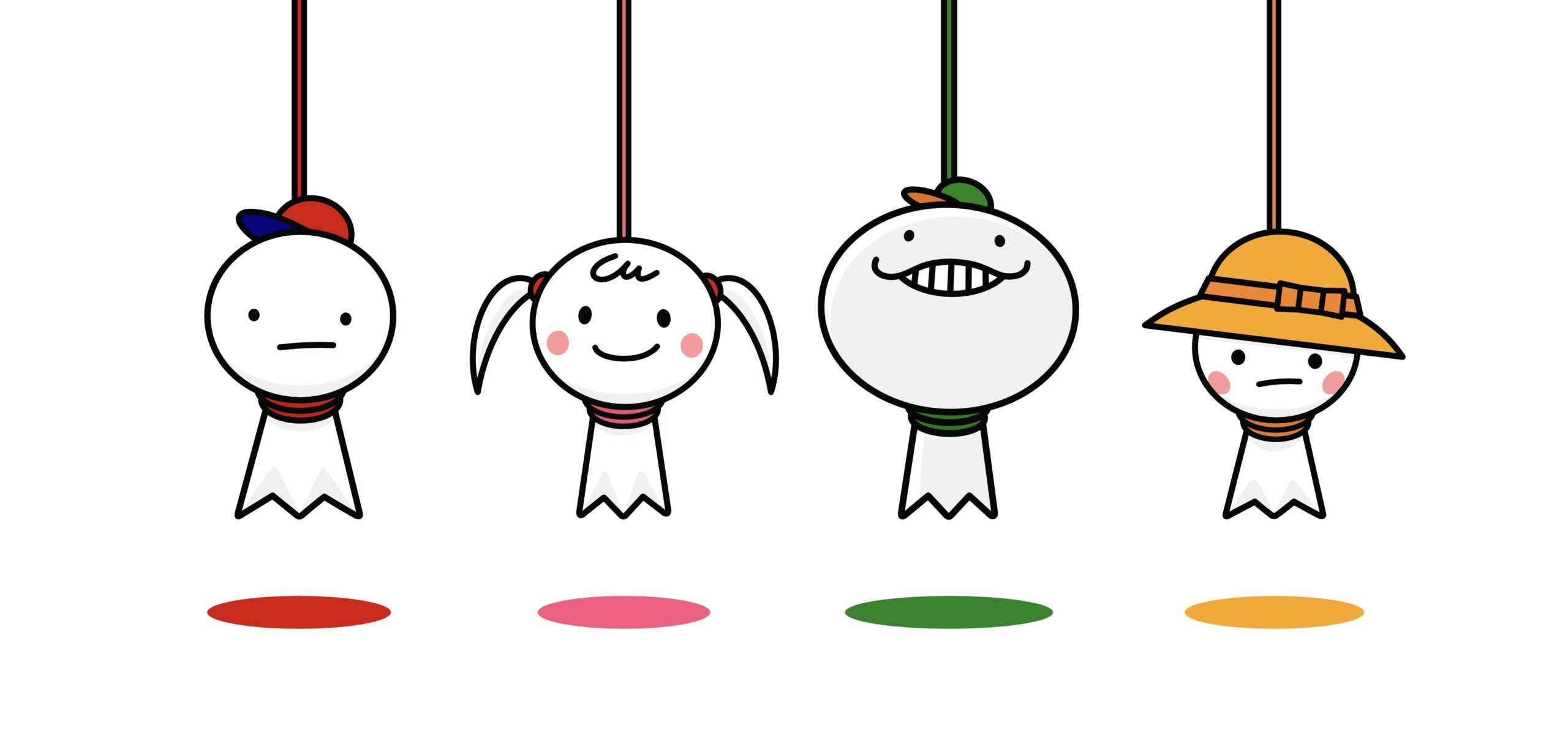
Telu Telu Boy
今井兄弟 (今井翔太、今井駿弥)
世界は不条理に満ちている。天災は絶え間なく各地で発生し、疫病は思いも依らぬ大混乱を誘発する。人間自身が引き起こす戦争でさえも、末端にとっては不条理に他ならない。それらは共通して、予期せぬ突然の非情な“死“を伴う。人間に予測できるものなんてちっぽけで、また、人間が思い通りにする事ができる事象など限られている。この世の中は大層理不尽で、馬鹿げている。
「Telu Telu Boy」は日本の伝統的な大衆民具である「てるてる坊主」をモチーフとし、現代日本で見られるキャラクター文化を背景に、若者=Boyとしての現代社会を象徴するアイコン(偶像)である。天候や天災という人間を襲う最も典型的な不条理を通して、混沌とした現代を生きる若者の生死や虚無感を表している。
「てるてる坊主」は、“天気“と密接に関係しており、日本では古来より風習として翌日の晴れを祈願する際に、白い布や紙を球状に覆い、紐で縛り、そして吊るしていた。この行為は自然災害が頻発する日本独特の文化であり、ある種のおまじないの意味合いがある。私たちは希望を込めて「てるてる坊主」を吊るすのである。それは、自然と対峙し不条理な天災に抗う術、とも捉えられるだろう。「てるてる坊主」の起源は幾つか通説があるが、それらは概ね「生贄」のようなものである。かつては命を捧げることで、自然の猛威を鎮めようとしていた。それが現代までに風習として残り伝わっているとされている。
天気という外的要因は、人間の感情をいとも簡単に変化させる。天候によって、土地の雰囲気やそこに住む人々の集団的性格にさえも影響が及ぶ。基本的な土地の性格はあるものの、天気は日々絶え間なく変わり続ける。特に可もなく不可もなく、天気の様に日々緩やかに変わり続ける事が人生における“日常“なのだとしたら、突如として襲う大きな変化は、人間に日常というものを意識させ、そして何が日常で、何が非日常なのかという認識すらも変えてしまう。不条理な天災は私たちに突如として日常を意識させると同時に、大きな傷跡を残していく。それでも私たちは、その不条理を受け入れて、生きていくしかないだろう。その葛藤の末に、人間の本質を捉えるいくつかの答えがあるのかもしれない。
私たちはどのように様々な不条理と向き合い、乗り越えていくことができるのか。
希望を込めて、問い直したい。
「あした、天気になあれ」と、願うように。
Telu Telu Boy
The Imai Brothers (Shota Imai, Shunya Imai)
The world is full of absurdities. Natural disasters are constantly occurring in various places, and a plague induces unexpected havoc. Even wars caused by humans themselves are nothing but absurdities for the people on the margins. These are all accompanied by sudden, unexpected and cruel “deaths”. There is only so much that we can predict and events that we can do as we wish. This world is so unreasonable and ridiculous.
“Telu Telu Boy” is based on the motif of “Teru Teru Bozu”, the traditional Japanese folk tool, and is an icon that symbolizes modern society as a youth against the background of the character culture found in Japan. Through the most typical absurdities that strike human beings, such as weather and natural disasters, it represents the life, death and emptiness of young people living in the chaos of our time.
“Teru Teru Bozu” is a doll that closely related to the weather. In Japan, it has been customary since the 18th century to cover a sphere with white cloth or paper, tie it with string and hang it up to pray for the fine weather. This practice is unique to the culture of Japan, where natural disasters occur frequently, and has the meaning of a kind of spell. We hang it with hope, which can be seen as a way of confronting nature and resisting the absurdity of natural disasters. There are several theories about the origins of it, but they are generally based on the idea of sacrifice to the gods for the weather. In the past, people tried to quell the fury of nature by offering their lives. It is believed that this custom has been passed down until today.
External factors such as weather can easily change our emotions. The weather affects the atmosphere of a region and even the social character of the people living there. Although there is the basic climate character of the land, the weather changes day by day. If such the gentle change is in regards to the “everyday” of life, then the sudden and drastic change makes us aware of it, and even changes our perception of what is our ordinary life and what is the extraordinary things. For instance, absurd natural disasters suddenly make us aware of our daily life, and they inflict significant damage on human being at the same time. Nevertheless, we will have no choice but to accept the absurdity and live with it. At the end of this struggle, we may find our own answer that tells us the inner nature of human
No one knows how we can confront and overcome the absurdities of the world. That’s why we need to question again
we wished “Ashita Tenki ni Nāre!” – Let it be fine day tomorrow!